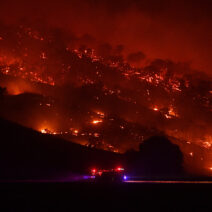Climate change is often depicted as a “ticking time bomb,” an apt metaphor for the urgency and potential devastation posed by global warming. Scientists have long warned that if we do not act decisively and promptly, the consequences could be irreversible. This article seeks to unpack the critical timelines associated with climate change, the implications of inaction, and the pathways that can steer us toward mitigation and adaptation.
At the heart of the discussion about how long we have to address climate change lies the concept of climate thresholds—specific points at which the climate system transitions from one state to another, often resulting in severe and irreversible impacts. The most referenced threshold is the 1.5 °C increase in global average temperature above pre-industrial levels. According to the Intergovernmental Panel on Climate Change (IPCC), we are perilously close to breaching this limit. With each passing year, the window for limiting the temperature rise narrows.
Scientific consensus indicates that to maintain atmospheric temperatures below the critical threshold, we must achieve net-zero carbon emissions by 2050. The IPCC’s Special Report on Global Warming clarifies that to remain below this temperature rise, we must reduce greenhouse gas emissions by about 45% from 2010 levels by 2030. This stark requirement emphasizes that the next decade is pivotal; we have less than ten years to enact significant changes.
The implications of failing to act are profound. Beyond rising sea levels and extreme weather events, unchecked climate change is anticipated to exacerbate food and water scarcity, increase health risks, and contribute to mass migrations and geopolitical conflicts. Ecosystems will be disrupted, resulting in biodiversity loss and altering the fabric of natural systems that sustain life. An unmitigated climate crisis could render some regions uninhabitable and lead to the extinction of numerous species.
Moreover, we cannot ignore the socioeconomic repercussions tied to climate inaction. Poor and marginalized communities, who contribute the least to greenhouse gas emissions, often suffer the most from the consequences. Climate change is not just an environmental issue; it is fundamentally an issue of social justice. Addressing climate change necessitates equitable solutions that prioritize the most vulnerable populations.
The discourse surrounding climate change often incorporates technological innovation and renewable energy as cornerstones of a sustainable future. Transitioning from fossil fuels to renewable sources such as solar, wind, and hydropower is imperative. This transition also encompasses developing energy efficiency technologies and enhancing carbon capture and storage technologies. However, technological advancements alone cannot avert the crisis—drastic behavioral and systemic changes are requisite. Shifting economic incentives, imposing carbon taxes, and incentivizing sustainable practices will play crucial roles in facilitating a transition toward a low-carbon world.
In contemplating direct actions, large-scale governmental policies are essential. International agreements like the Paris Accord underscore the importance of collaboration among nations to achieve collective climate goals. Each country must commit to ambitious targets while also supporting one another through climate finance and technology transfer. While the challenges of international cooperation can be formidable, a unified approach is paramount in this global endeavor.
Alongside government action, grassroots movements and local initiatives are gaining traction. These movements often originate from local communities, embodying a bottom-up approach that can foster genuine change. Community resilience strategies, including urban green spaces, community gardens, and local conservation efforts, empower individuals. They cultivate a collective ethos around sustainability, illustrating how local actions can catalyze broader transformations.
Education and advocacy also play crucial roles in fostering awareness and generating a sense of urgency. Effective communication about climate change is essential in mobilizing public sentiment towards action. Engaging youth and empowering them through educational programs can create a new generation of environmental stewards who are committed to sustainability.
The urgency of the situation means that time is of the essence. Our current trajectory indicates that the world is not on track to meet the necessary emission reductions. With just a decade left to curtail emissions substantially, immediate action is crucial, and every moment counts. A collective and multifaceted approach encompassing individual behavioral changes, corporate responsibility, and governmental action is imperative to avert the worst impacts of climate change.
In conclusion, the “ticking time bomb” of climate change is a stark reminder of the finite nature of our opportunities to act. The next decade is pivotal, and what we do—or fail to do—in these years will define the future of our planet. Embracing innovative solutions, forging collaborative international frameworks, and fostering community engagement are paramount in this fight. The consequences of delaying action could be catastrophic, but with concerted efforts and a focus on sustainability, we can enact meaningful change. The clock is ticking, and humanity’s response will determine the outcome of this critical moment in our history.








